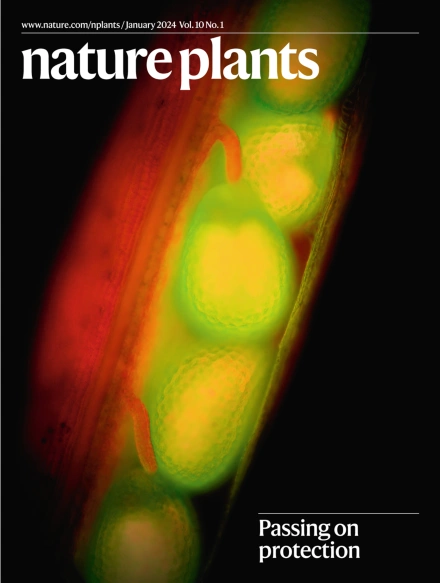DG1启动子染色体反转驱动重粒小穗,提高高粱籽粒产量
IF 15.8
1区 生物学
Q1 PLANT SCIENCES
引用次数: 0
摘要
多粒小穗现象在禾本科作物中很常见。在双小花的情况下,上部可育小花正常发育形成单粒,而下部不育小花发生败育。本文研究了高粱双粒1号(double grain 1, DG1)基因在调控下小花分生组织活性和双粒小穗性状中的作用。DG1启动子区35.7 kb的顺中心倒置可能通过减少抑制性组蛋白修饰导致DG1表达增加。DG1表达的增加将退化的小花转化为可育小花。利用优越的DG1等位基因,每穗粒数提高约40.7% ~ 46.1%,籽粒总产量提高10.1% ~ 14.3%。研究结果揭示了高粱双粒小穗特征,为谷物高产育种设计提供了有价值的见解。本文章由计算机程序翻译,如有差异,请以英文原文为准。


Chromosomal inversion at the DG1 promoter drives double-grain spikelets and enhances grain yield in sorghum
The phenomenon of multiple-grain spikelets is frequently observed in gramineous crops. In the case of dual-floret spikelets, the upper fertile floret develops normally to form a single grain, while the lower sterile floret undergoes abortion. Here we elucidate the role of Double-Grain 1 (DG1), a gene encoding a homeobox-domain-containing protein, in regulating the lower floret meristem activity and double-grain spikelet trait in sorghum. A 35.7-kb paracentric inversion in the DG1 promoter region leads to increased DG1 expression, probably by reducing repressive histone modifications. This increase in DG1 expression transforms the degenerated lower floret into a fertile one. The use of the superior DG1 allele results in an increase of approximately 40.7% to 46.1% in grain number per panicle and a 10.1% to 14.3% increase in overall grain yield. Our findings shed light on the sorghum double-grain spikelet characteristic, offering valuable insights for high-yield breeding designs in cereals. A 35.7-kb inversion in the DG1 promoter increased DG1 expression in sorghum, inducing double-grain spikelets by restoring fertility to the lower floret. The superior DG1 allele boosted grain number and yield, providing insights for high-yield breeding.
求助全文
通过发布文献求助,成功后即可免费获取论文全文。
去求助
来源期刊

Nature Plants
PLANT SCIENCES-
CiteScore
25.30
自引率
2.20%
发文量
196
期刊介绍:
Nature Plants is an online-only, monthly journal publishing the best research on plants — from their evolution, development, metabolism and environmental interactions to their societal significance.
 求助内容:
求助内容: 应助结果提醒方式:
应助结果提醒方式:


